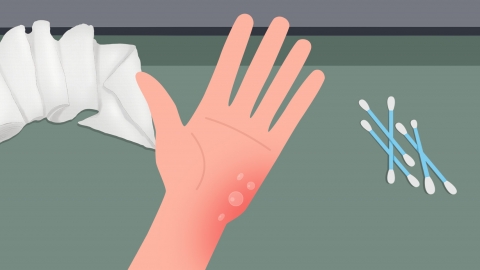What treats burns
Commonly used medications for treating burns include Moist Burn Ointment, Mupirocin Ointment, Recombinant Human Epidermal Growth Factor Gel, Silver Sulfadiazine Cream, and Compound Polymyxin B Ointment. These should be used under medical guidance. If the burn covers more than 1% of the body surface area, reaches the dermal layer, or is accompanied by fever, prompt medical attention is recommended.

1. Moist Burn Ointment: Suitable for superficial second-degree burns, this ointment helps maintain a moist wound environment, alleviates pain caused by burns, and provides favorable conditions for tissue regeneration, promoting gradual healing of damaged skin.
2. Mupirocin Ointment: A topical antibacterial medication, it is appropriate for superficial burns with risk of infection. It inhibits the growth of common wound pathogens, prevents infection, and avoids delays in wound healing due to infection.
3. Recombinant Human Epidermal Growth Factor Gel: Indicated for superficial second-degree burns and deeper injuries, this gel acts on epidermal cells at the wound site to promote cell proliferation and migration, accelerate re-epithelialization, and reduce the likelihood of scar formation.
4. Silver Sulfadiazine Cream: Recommended for moderate to deep burns or wounds prone to infection, it offers both antibacterial action and wound protection. It kills various bacteria that can cause wound infections and creates a sterile environment conducive to tissue repair.
5. Compound Polymyxin B Ointment: Contains multiple antimicrobial components and is suitable for superficial burns with mild signs of infection. It inhibits the growth of both Gram-positive and Gram-negative bacteria, helping relieve discomfort such as redness, swelling, and pain caused by infection.
In daily care, keep the burned area well-ventilated and avoid repeated friction from clothing. Avoid contact with contaminated water during wound healing. Increase intake of high-quality protein foods such as eggs and milk in the diet to support skin recovery.





